- Useful properties, composition and application
- Jam preparation recipes
Useful properties of honeysuckle have long been known and are successfully used in folk medicine in the treatment of many diseases of the digestive, cardiovascular, genitourinary systems. It helps to get rid of obesity, to fill the lack of vitamins and minerals, to strengthen immunity, to cleanse the body of toxins.
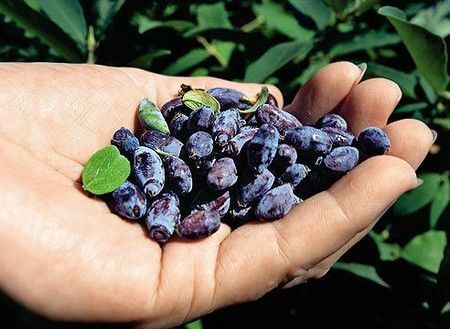
From berries cook jams, compotes, jam, dry them, eat fresh or grind with sugar. Leaves, flowers, bark, roots and other parts of the plant are used for cooking broths, infusions, tinctures. They are consumed or used externally.
Useful properties, composition and application of
Honeysuckle has long enjoyed the fame of a medicinal plant. Preparations on its basis were used by Avicenna. During the Great Patriotic War, bandages were made from leaves, decoction from the branches was treated with dysentery and gastric disorders. Honeysuckle is not deprived of attention in our days. Despite the fact that a huge amount of medicines for various purposes has appeared, its berries are still being treated. What is so useful for honeysuckle? What is so valuable in it? Let's try to figure this out.
The chemical composition of berries
Honeysuckle berries contain a huge amount of biologically active elements useful for health. Sour taste indicates a high content of ascorbic acid, and light bitterness indicates the presence of glycosides and tannins. Rich purple berries are also minerals, organic acids, sugars. Depending on the variety and location of the plant, their quantitative ratio may vary slightly, but this does not affect the useful properties of honeysuckle.
Chemical composition:
- of sugar - 3-12%;
- organic acids - 1-5%;
- pectins - 0.1-1%;
- tanning agents;
- ethers;
- glycosides;
- bioflavonoids;
- vitamins;
- micro and macro elements.
Saccharides are represented by fructose, sucrose, glucose, galactose. Their percentage composition depends on the plant variety and the conditions of its growth. For example, a berry grown in a hot climate will be sweeter than fruits ripened in the north. At the same time, honeysuckle, which grows in cold conditions, contains more vitamin C.
As for ascorbic acid, the berries of honeysuckle are not inferior to lemon and strawberries. Its amount can reach 200 mg / 100 g. Vitamin A is carotene. On average, 100 g of berries contains 0.3-0.6 mg of this substance that is most useful for the eyes and skin. Also in the fruits there is a rather large amount of B vitamins. This is thiamin, riboflavin, folic acid or vitamin B9.
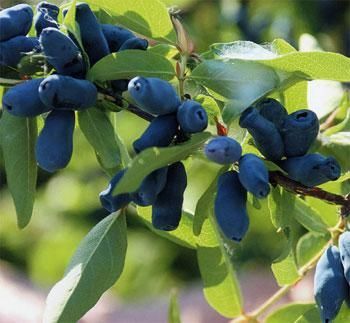
Honeysuckle is a berry rich in a wide variety of minerals. It contains the following micro- and macro elements:
- calcium
- potassium
- sodium
- zinc
- magnesium
- iodine
- iron
- manganese
- copper
- phosphorus
- silicon.
Berries also contain organic acids and P-active substances, which in medicine are called bioflavonoids. Among the acids, citric and apple are predominant. In a smaller amount, amber and oxalic acids are found. Among the bioflavonoids, catechins, anthocyanins, leucoanthocyanins are especially worth noting.
An interesting fact! Honeysuckle is quite an unpretentious plant. It easily suffers a prolonged drought and is able to withstand 50o frosts!
Health Benefits
Honeysuckle berries taste good. They make very delicious homemade preparations. However, this unpretentious shrub is appreciated not only for jam and compotes. His fame he got for the ability to rid himself of many diseases and ailments. The substances contained in it endowed this plant with the following useful properties:
- anti-inflammatory
- antioxidant
- immunostimulating
- antibacterial
- analgesic
- astringent
- diuretic
- antipyretic
- restorative
- cardiotonic
- tonic.
Glycosides promote the normalization of cardiac activity, reducing high blood pressure. Pectins remove toxins from the body. Flavonoids strengthen the walls of blood vessels, increase resistance to diseases and harmful environmental factors. Leukoanthocyanes slow the growth of tumor formations.
A large number of vitamins and minerals in berries can make up for their deficiency in the body. Particular mention should be made of the antiscorbutic effect that honeysuckle fruit possesses. High content of magnesium and sodium provides protection from atherosclerotic plaques, heart attacks, strokes.
Use of
For medicinal purposes, fruits, inflorescences, leaves, and other parts of the plant are used. Berries are consumed fresh, dried, squeezed out of them juice, cooked compotes, jelly, jam, grinded with granulated sugar. To maintain the useful properties of honeysuckle as much as possible, the minimum temperature treatment is used. Fresh fruit, infusions and decoctions of dried fruits useful in the treatment of the following diseases:
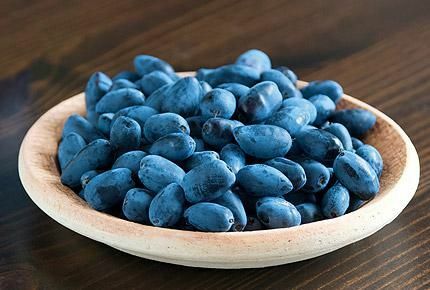
- anemia
- hypertension
- cold
- avitaminosis
- heartburn
- atherosclerosis
- Oncology
- myocardial
- stroke
- colitis
- gastritis
- diabetes
- malaria
- glaucoma
- constipation
- obesity.
When anemia, beriberi, for the prevention of colds, cardiovascular diseases, strengthen immunity, it is enough to eat one handful of berries a day. In order to lower blood pressure, get rid of migraines, improve digestion, reduce fever with colds, prepare infusion of fresh or dried fruits. The berries are poured with boiling water at the rate of 50 grams per half liter of water and insisted for 3 hours. The received drug is taken in half a cup for 30 minutes.before meals. Broth from berries is treated with conjunctivitis, tonsillitis, tonsillitis, stomatitis, washing their eyes and throat. Fresh juice is treated with psoriasis, ulcers, eczema, various skin diseases, lubricating the affected areas.
Leaf, flowers and kidneys prepare infusions, as well as tinctures for alcohol. They are consumed or used externally. The bark, branches and roots are applied as a decoction. Infusion taken inside with diseases of the urinary system, diarrhea, edema. For its preparation 4 tbsp. Spoons of finely crushed dry leaves of honeysuckle are poured in 200 ml of boiling water and left for infusion for about 2 hours. Drink 2 tablespoons.spoon 3 times a day before meals.
Decoction of bark and branches is used for colitis, digestive disorders, angina, conjunctivitis. To make it, take 20 g finely chopped bark, add a glass of water and cook for about 15 minutes. Then cool and filter. This drug is taken internally for 1 tbsp.spoon for half an hour before a meal or use to rinse your throat, wash your eyes. Crushed fresh leaves can be treated with various skin lesions, burns, purulent wounds, inflammation. Decoction of the roots helps to strengthen the roots of hair and enhance their growth.
Tip! Before using honeysuckle, you should make sure that you have no contraindications for its use. For this, consult a specialist beforehand about the advisability of such treatment.
Contraindications
Like all medicinal plants, honeysuckle has both beneficial properties and contraindications for use. For example, it is not recommended to use it in the presence of an allergic reaction, hypotension, acute gastric disorder. It is better not to eat berries with high acidity of the stomach, erosions, ulcers. Overeating can cause skin rashes, digestive disorders, muscle spasms, colic.
It should also be remembered that there are poisonous varieties of honeysuckle, the fruits of which have a red and yellow color. Eating them for food is fraught with serious poisoning, which can result in death.
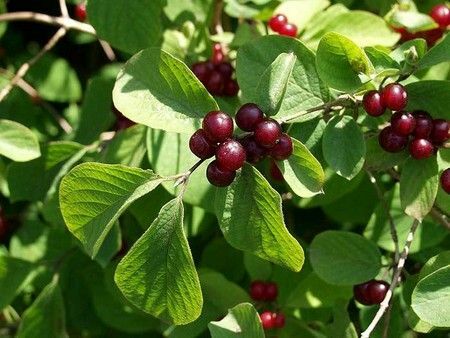
Jam preparation recipes
Honeysuckle berries are used to make a variety of home brews. Of them, fillings for pies, mors, compote, liqueur, jelly, jam are made. Especially delicious is jam from honeysuckle. It can be prepared in several ways.
Method # 1
First, a syrup is prepared. To do this, the granulated sugar is dissolved in water in a ratio of 1 kg per 200 ml of liquid and cooked for 10 minutes.on a small fire after boiling. Then, the syrup is poured into the washed berries washed under running water, the berries peeled from leaves and peduncles. Once the brew boils, it is removed from the fire. The pan is placed in a cool place for 7 hours, and then again put on a plate and cook for 15 minutes.
Method №2
Berries are mixed with granulated sugar in equal quantities. After the juice appears, the pot is put on the fire and cooked for about 5 minutes.after boiling. Then, proceed the same way as in the first case, only the cooling time is increased to 8 hours.
Method number 3
Sugar syrup is prepared, as well as in the first recipe. Then 1 kg of honeysuckle is poured into it and left for 4 hours. After this time is over, and the fruits are soaked with syrup, the dishes are put on the stove and boiled for 5 minutes. Remove from heat, cool for 7 hours, and then again put on the burner. Jam is considered ready after the berries cease to float.
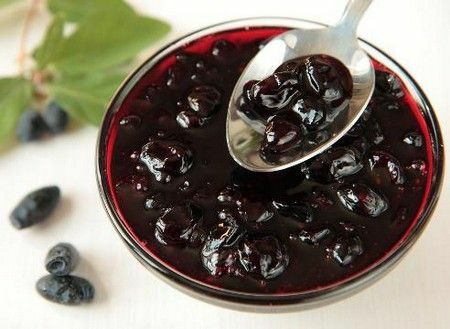
Advice! To preserve the jam from the honeysuckle, the second cooking is supplemented with citric acid. Per kilogram of product is enough 1 g of powder.
